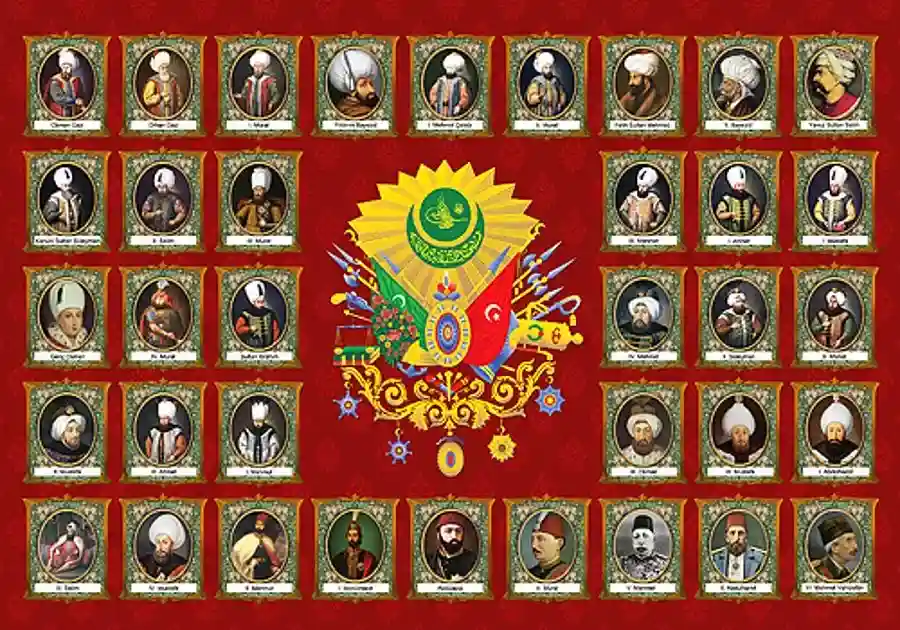Complete List of Ottoman Sultans; The Ottoman Empire has written its name in history in golden letters as an empire that ruled three continents for approximately 600 years. Many sultans took part in the administration of this great empire, from the founder of the state, Osman Gazi, to the last sultan, Mehmet VI Vahdettin. The List of Ottoman Sultans includes the sultans who took part in the administration of this huge empire, each of whom stood out with various reforms, conquests and administrative changes in different periods of history. The List of Ottoman Sultans includes the names of leaders who played an active role in the rise, stagnation, decline and collapse periods of the empire. This list also provides important information about Ottoman history and cultural heritage. Examining the List of Ottoman Sultans in detail is of great importance in understanding the administrative structure of the empire, the characteristics of the sultans and their periods.
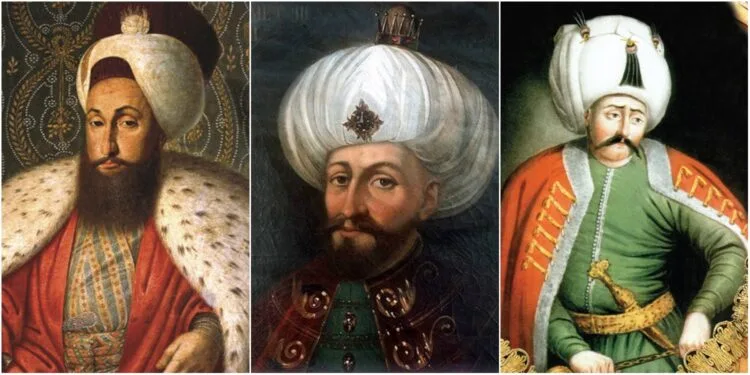
List of Ottoman Sultans Chronologically
The Ottoman Empire had 36 sultans. The list of Ottoman Empire Sultans is as follows.
1. Osman Gazi (1299-1326)

Osman Gazi was born in Söğüt in 1258. His father was Ertuğrul Gazi and his mother was Halime Hatun. He was the founder of the state. Bilecik, Yarhisar Castle, Yenişehir, İmralı Island, Koçhisar, Akhisar, Mudanya, Karamürsel and Akyazı were important places conquered during the reign of Osman Gazi. Osman Gazi, who spent most of his life fighting against Byzantium, died during the siege of Bursa in 1326.
He is at the top of the Ottoman Sultans List. Osman Gazi, the founder of the Ottoman State, established his principality in 1299 and laid the foundations of the Ottoman Empire. Osman Gazi’s leadership took the first steps of the transformation from a small principality to a great empire.
Although Osman I gave his name to the Ottoman Empire, it was his father Ertuğrul who founded the principality around Söğüt. This is why Osman fought against Byzantium to expand his kingdom, took important defenses, conquered Bursa and is considered the founder of the Ottoman Empire.
2. Orhan Gazi (1326-1362)
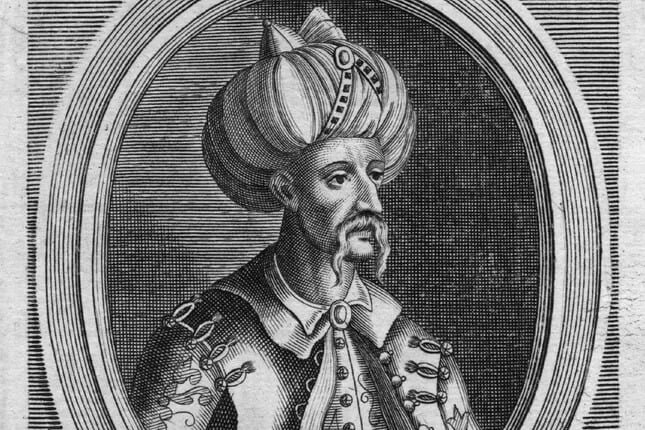
Orhan Gazi was born in 1281. His father was Osman Gazi. After the conquest of Bursa was completed, he made this city his capital. He minted the first silver coin. He established the first standing army called Yaya, the divan organization and the first Ottoman madrasah in İznik. During his reign, important places such as the lands from Üsküdar to Kandıra in Anatolia, İznik, Mudurnu, Göynük, İzmit, Hereke, Yalova, the Marmara Islands and the lands of the Karesi Principality were conquered. Then, Çimpe Castle was the first piece of land in Rumelia, and then Gelibolu was conquered. Orhan Gazi died in 1359.
Orhan Gazi, the son of Osman Gazi, expanded the principality he inherited from his father and conquered Bursa, making it the first capital of the Ottoman Empire. During the reign of Orhan Gazi, the institutionalization process of the state accelerated.
Orhan was the son of Osman I, and continued to expand his family’s territory by taking Nicea, Nicomedia, and Karasi while drawing an increasingly larger army. Instead of fighting solely the Byzantines, Orhan allied himself with John VI Cantacuzenus and fought John’s rival John V Palaiologos, gaining rights, knowledge, and Gallipoli, thus expanding Ottoman interests in the Balkans.
3. Murad I (1362-1389)

Murad I was born in Bursa in 1326. His father was Orhan Gazi. During the reign of Murad I, who was more commonly known as Murat Hüdavendigar, the capital was moved to Edirne, the office of kazasker was established, and the foundation of the Janissary Corps was laid with the pençik law. The main lands conquered were Karadeniz Ereğlisi, Ankara, Edirne, Gümülcine, Filibe, Biga, Çatalca, İskeçe, Drama, Kavala, Nis, the Bulgarian Kingdom, Manastır and Sofia. Kütahya, Simav, Eğrigöz and Tavşanlı were taken from the Germiyanoğulları as a dowry, and 6 cities were taken from the Hamidoğulları in exchange for money. Two victories were won against the Crusaders in Sırasındığı and Çirmen. The First Battle of Kosovo, fought with the Balkan Alliance in 1389, was won and Murad I was martyred by Miloş, one of the Serbian warriors, while he was visiting the battlefield.
Murad I ensured the expansion of the state in the Balkans and won a great victory in the Battle of Kosovo. During this period, the military power of the state increased and the Janissary Corps was established.
Orhan’s son, Murad I, oversaw a massive expansion of Ottoman territory, taking Edirne, subjugating the Byzantines, and winning victories in Serbia and Bulgaria that forced their submission and forced expansion elsewhere. However, Murad was assassinated by an assassin’s trick, despite winning the Battle of Kosovo with his son and expanding the Ottoman state machinery.
4. Bayezid Yıldırım (1389-1402)
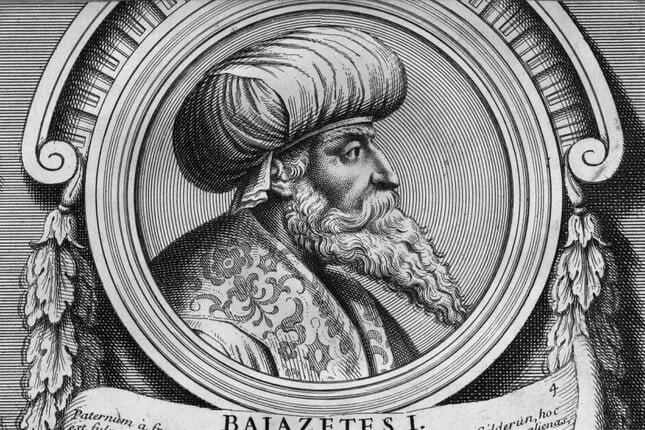
Bayezid Yıldırım was born in Edirne in 1360 to Murat I and Gülçiçek Hatun. During his reign, Serbia was annexed to the Ottomans, and all the principalities including the Bosnian lands, Aydın, Menteşe, Hamid, Teke, Germiyanoğulları, Kastamonu and Sinop principalities, Alaşehir, Amasya, Karaman, Selanik, and İşkodra were captured. Istanbul was besieged for the first time and a total of 4 times. Anadolu Hisarı was built during the sieges. After the Nicopolis victory against the Crusaders, Yıldırım Bayezid was given the title of Sultan-ı Rum by the Abbasid Caliph. He ensured the unity of the Anatolian Turks. However, this unity was dissolved as a result of Yıldırım being captured in the Battle of Ankara, which was lost against the Timur State in Çubuk Plain in 1402. Bayezid I died in captivity in 1403.
Bayezid Yıldırım tried to establish unity in Anatolia and achieved a great victory in the Battle of Nicopolis. However, he was defeated by Timur in the Battle of Ankara and was taken prisoner.
Bayezid conquered large areas of the Balkans, fought Venice and established a multi-year blockade of Constantinople, and even defeated a crusade against him after his invasion of Hungary. However, his rule was defined elsewhere, as his attempts to expand his power in Anatolia brought him into conflict with Timur, who defeated, captured, and imprisoned Bayezid.
The Interregnum (1402-1413)
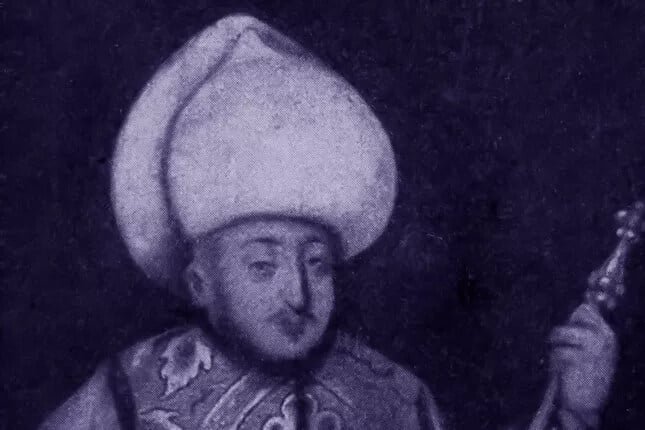
After Bayezid I was captured, throne struggles began in the Ottoman Empire and this period was called the Interregnum. During this period, the state lost its central authority and civil wars broke out between brothers.
With the loss of Bayezid, the Ottoman Empire was saved from complete destruction by the weakness in Europe and Timur’s return to the east. Bayezid’s sons were not only able to seize control but also wage a civil war for it; Musa Bey, Isa Bey and Suleiman were defeated by Mehmed I.
5. Mehmed I (1413-1421)
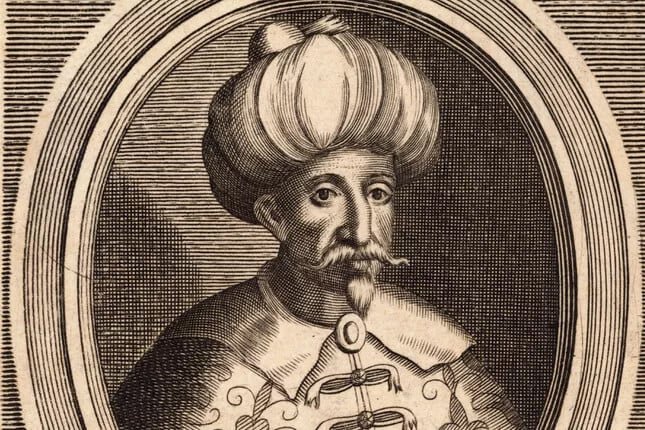
Mehmed I was born in 1389. He was the son of Yıldırım Bayezid. After his father was captured, he won the throne struggle with his brothers in 1413 and ascended to the throne. The period between 1402-1413 was called the Interregnum. Mehmed I tried to re-establish the unity of the Anatolian Turks. After peace was partially established in Anatolia, the Balkan conquests began, Albania was conquered, the first naval war with the Venetians was fought but lost. The Sheikh Bedrettin rebellion broke out and was suppressed. Mehmed I, who is considered the second founder of the state, died in 1421.
Mehmet I, who ended the Interregnum and brought the state back together, ensured internal peace and strengthened the state again. His reign was a period when the Ottoman Empire entered a period of recovery.
Mehmed managed to unite the Ottoman lands under his rule (at the expense of his brothers), and in doing so he was aided by the Byzantine emperor Manuel II. Walachia was made a vassal state and was seen as a rival pretending to be one of his brothers.
6. Murad II (1421-1444, 1446-1451)
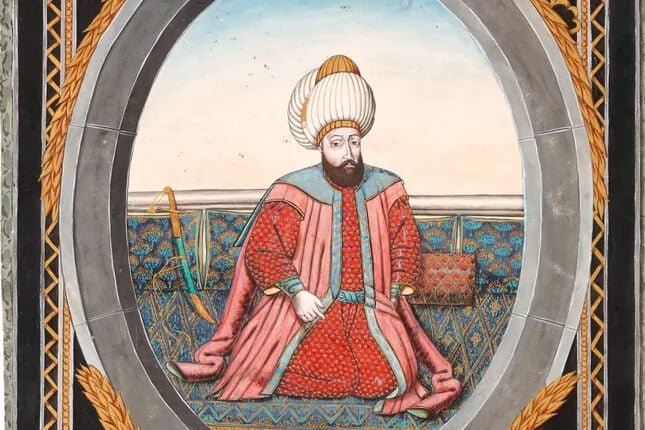
Murad II, who was born in 1402, fought with his uncle Mustafa Çelebi, Turkish nobles, Byzantines and Hungarians while on the throne. He established the Azab infantry class. He laid siege to Istanbul. He conquered important places such as Yanya and Semendire. He defeated Albert II, the German Emperor and King of Austria. He took back most of the principalities. He won a naval victory against the Venetians at Gallipoli. He laid siege to Belgrade. He suffered defeats against the Crusader Army. Then, in 1444, he left the throne to his son Mehmed II. When Hungary violated the Treaty of Segedin that it had signed before this period and withdrew its army to Varna, he took over the army and was victorious in the battle in Varna. He regained the throne in 1446 and won the Second Battle of Kosovo with the Hungarians in 1448. He died in Edirne in 1451.
Murad II made important conquests in the Balkans and defeated the Crusader army in the Battle of Varna. During his reign, the Ottoman Empire continued to expand both east and west.
Emperor Manuel II might have aided Mehmed I, but now Murad II had to fight against rival claimants supported by the Byzantines. Thus, after defeating them, the Byzantines were threatened and forced to retreat. Initial advances in the Balkans resulted in a war against a major European alliance that cost them losses. However, in 1444, after these losses and a peace treaty, Murad abdicated in favor of his son.
7. Mehmed II (Mehmed the Conqueror) (1451-1481)

Mehmed II was born in Edirne in 1432. He conquered 17 states, large and small. The most important of these is undoubtedly the conquest of Istanbul, the capital of Byzantium, in 1453. Before this conquest, he had the Rumeli Hisarı built, had Şahi cannons cast, a new navy built, and made many other preparations. During the siege, he implemented tactics, many of which were seen for the first time, such as chaining the Golden Horn, moving ships overland, building wheeled towers, and building an underground road. After the conquest, he made Istanbul his capital and captured the islands of Imbros, Limni, Thassos, Enez, and Lesbos, as well as states such as Serbia, Morea, Athens, Georgia, Wallachia, Bosnia, Herzegovina, Albania, the Karamanid Principality, and the Empire of Trebizond. After the 16-year Ottoman-Venetian war, he made an alliance with Venice in 1479. With the annexation of the Crimean Khanate, the Black Sea became a Turkish Lake. He won the Otlukbeli War with the Akkoyunlu in 1473. He organized an Italian campaign and conquered Otranto. During his period, the territorial integrity of Anatolia and Rumelia was ensured, the state became an empire, the Kazaskerlik office was divided into Anatolia and Rumelia, Topkapı Palace was built, the first university, Istanbul University, was founded, and two laws were published. Fatih Sultan Mehmet passed away in 1481.
By conquering Istanbul, Fatih Sultan Mehmet ended the Byzantine Empire and ensured that the Ottoman Empire became a modern empire. The conquest of Istanbul is considered the beginning of a new era in world history.
Mehmed was only 12 years old when his father abdicated, and in this initial phase he reigned for only two years before the situation in the Ottoman war zones required his father to regain control.
8. Bayezid II (1481-1512)
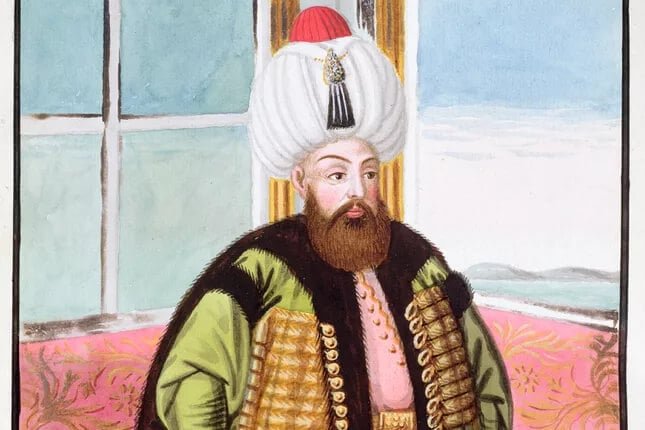
Bayezid II was born in Dimetoka in 1448. In the first years of his reign, he dealt with his brother Cem Sultan and the Moldavia issues, and fought against the Mamluks for reasons such as their support for Cem Sultan and their claim to the Dulkadiroğulları Principality. Unable to achieve his goal, Cem Sultan sought refuge with the Knights of Rhodes, who handed him over to the Pope. Montenegro was taken under protection, and Lepanto and Navarin were conquered during this period. The Şahkulu rebellion, which arose as a result of the provocations of the Safavid State, was suppressed, and the first relations with the Russians were established. Bayezid II handed over the throne to his son Selim, with whom he had to fight several times, in 1512, and died the same year.
During the reign of Bayezid II, peace and stability were prioritized in the state, and importance was given to science and art. However, towards the end of his reign, there were throne fights and internal turmoil.
Bayezid, a son of Mehmed, had to fight his brother to secure his throne. He did not engage in a full-scale war against the Mamluks and had less success, and although he defeated a rebel son, Bayezid, he was unable to stop Selim and, fearing he was losing support, abdicated in favour of the latter. He died very soon afterwards.
9. Yavuz Sultan Selim (1512-1520)
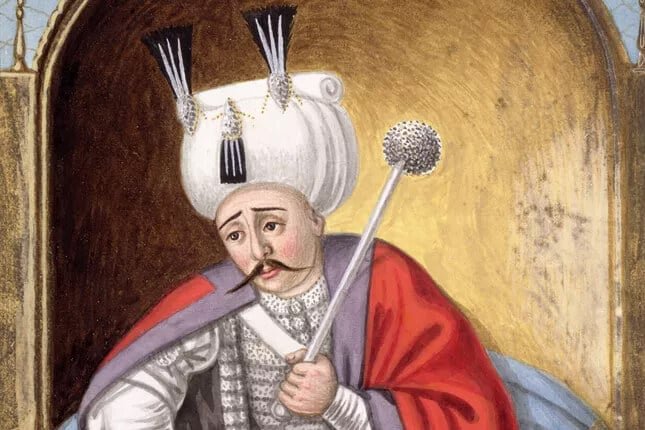
Born in 1470, Selim I mainly fought against the Safavids under the rule of Shah Ismail and the Mamluk State. He defeated the Safavids in the Battle of Chaldiran (1514) and the Mamluks in the Battles of Marj Dabiq (1516) and Ridaniya (1517). As a result of these battles, Eastern Anatolia, Mosul, Kirkuk, Erbil, Syria, Egypt, Hejaz, Palestine and Jerusalem became Ottoman territory. The Mamluk State collapsed, and control of the Caliphate and the Spice Route passed to the Ottomans. Venice began to pay the taxes it had paid for Cyprus to the Ottoman State. This principality was also ended as a result of the Battle of Turnadağ with the Dulkadiroğulları during the Egyptian Campaign following the Battle of Chaldiran. Selim I, who suppressed the Jelali rebellion in Anatolia, died in 1520.
Yavuz Sultan Selim made great conquests during his short reign. He defeated the Safavid State with his eastern campaigns and annexed Egypt to Ottoman lands. During his reign, the Ottoman Empire also incorporated the caliphate.
After fighting against his father, Selim ascended to the throne, eliminating all similar threats and leaving him with a son, Suleiman. Repelling his father’s enemies, Selim expanded into Syria, the Hejaz, Palestine and Egypt, and conquered the caliphate in Cairo. In 1517, the title was transferred to Selim, making him the symbolic leader of the Islamic states.
Read More : Extra History Of Yavuz Sultan Selim
10. Suleiman the Magnificent (1520-1566)
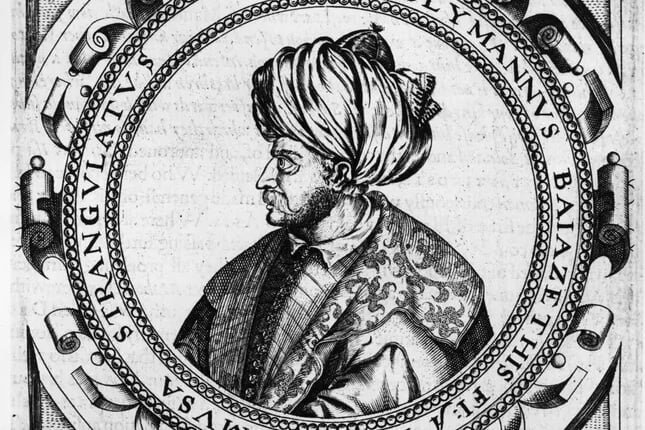
Suleiman the Magnificent was born in Trabzon in 1494. The state experienced its brightest period during his reign. Suleiman I was the longest reigning sultan among the Ottoman Empire sultans. He spent about 10 years and 3 months of his 46-year reign in campaigns such as Belgrade, Rhodes, Mohaç, Vienna, Alaman, Iraq, Iran (3 times), and Szigetvar, which resulted in many victories. He died of illness during the last Szigetvar campaign (1566). During this period, important lands such as Belgrade, Rhodes, Hungary, Iraq, Tabriz, Nakhchivan, and Tripoli were conquered. Algeria under the command of Barbaros Hayrettin Pasha and his brother Oruç Reis was annexed to the Ottoman Empire. As a result of the Preveza Naval Victory against the Crusader Navy, the navy under the command of Barbaros Hayrettin Pasha, who was appointed as Kaptan-ı Derya, gained superiority in the Mediterranean. Expeditions were organized to the Indian Ocean between 1538-1553. The first Capitulation was given to France during this period. The rebellions of the Governor of Damascus Canberdi Gazali, the Governor of Egypt Ahmed Pasha, and the Babazünnun and Kalenderoğlu rebellions in Anatolia are among the rebellions that broke out during this period.
Suleiman the Magnificent lived one of the brightest periods of the Ottoman Empire and was known as “Suleiman the Magnificent”. During his reign, the Ottoman Empire expanded greatly in Europe, Asia and Africa. He is also famous for his law and justice reforms.
Arguably the greatest of all Ottoman leaders, Suleiman not only greatly expanded his empire, but also fostered an era of great cultural wonder. He conquered Belgrade, shattered Hungary at the Battle of Mohács, but failed to win the siege of Vienna. He also fought in Persia but died during a siege in Hungary.
11. Selim II (1566-1574)
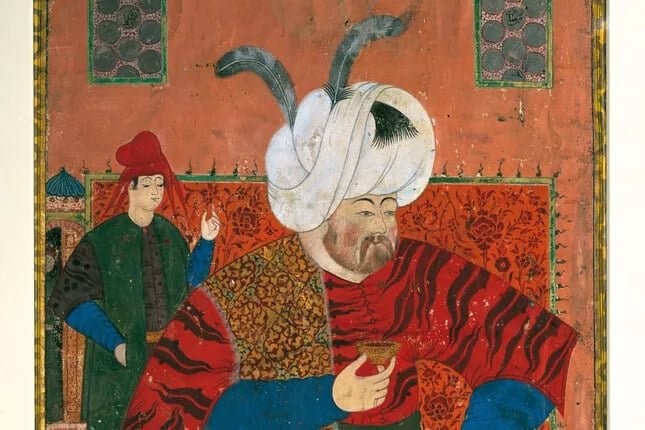
Selim II was born in 1524. The conquest of Chios, Cyprus, Dalmatia and Tunisia took place during this period. The Venetians were defeated at Lepanto. The discovery of sea routes passing through America and the south of Africa caused the Mediterranean to lose its former importance. As a result of the income losses, the projects of the Suez Canal and the connection of the Don and Volga Rivers with a canal were focused on. As the Russians grew stronger, there were land losses in the north of the Black Sea.
Selim II, the son of Suleiman the Magnificent, relied more on his grand viziers in the administration of the state. During his reign, Cyprus was conquered and a great defeat was suffered against the Crusader fleet in the Battle of Lepanto.
Despite winning a power struggle with his brother, Selim II was happy to entrust increasing amounts of power to others, and the elite Janissaries began to undermine the Sultan. However, although his reign saw one European alliance crush the Ottoman fleet at the Battle of Lepanto, a new one was ready and active the next year. Venice was forced to submit to the Ottomans. Selim’s reign has been remembered as the beginning of the decline of the Sultanate.
12. Murad III (1574-1595)
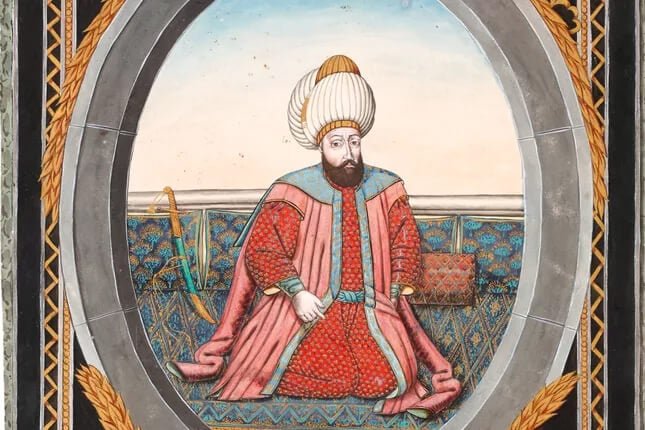
Murad III was born in 1546. During this period, the Baltic coast was reached with the protection of Poland. Morocco was taken under protection. Tbilisi was taken. With the conquest of Shirvan, the first Ottoman administrative organization was established in the Caucasus. The first Ottoman-English relations were established. The rebellion of Crimean Khan Mehmed Giray was suppressed. Uprisings broke out in Wallachia, Moldavia and Transylvania. Esztergom was lost to the Austrians. Murat III died in 1595.
During the reign of Murad III, the Ottoman Empire continued to expand east and west. However, during the same period, some internal administrative and economic problems began to emerge.
The Ottoman position in the Balkans began to fray as vassal states allied with Austria against Murad, and despite making gains in a war with Persia, the state’s finances were deteriorating. Murad has been accused of being too sensitive to domestic politics and allowing the Janissaries to become a force that threatened the Ottomans rather than their enemy.
13. Mehmed III (1595-1603)
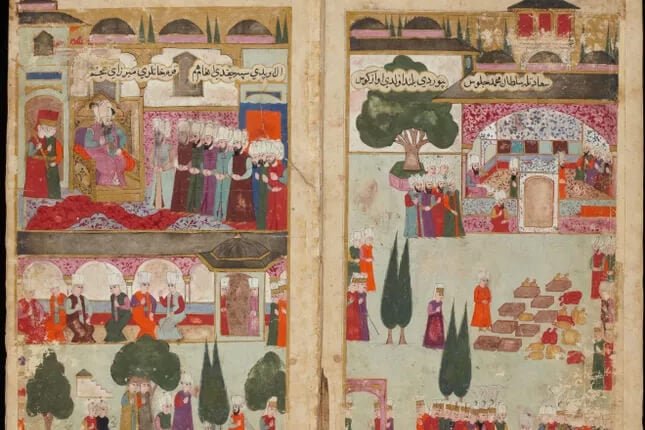
Mehmed III was born in 1566. Mehmed III, who ascended to the throne while the Ottoman-Austrian war was ongoing, had all his brothers massacred as soon as he ascended to the throne, thus the bloodiest fratricide in Ottoman history took place. The sanjak system was abolished and the cage system was introduced. The Ottoman Empire reached its widest borders in the east, Eğri and Kanije Castles were conquered, and the Battle of Haçova with Austria was won. This war was the last battle to be won in the west. He died in 1603.
Mehmed III demonstrated the Ottoman power in Europe by conquering Eğri Castle. However, internal unrest and Celali rebellions increased during his reign.
The war against Austria, which began during the reign of Murad III, continued and Mehmed achieved some success with victories, sieges and conquests, but he faced rebellions due to the declining Ottoman state and a new war with Iran.
14. Ahmed I (1603-1617)
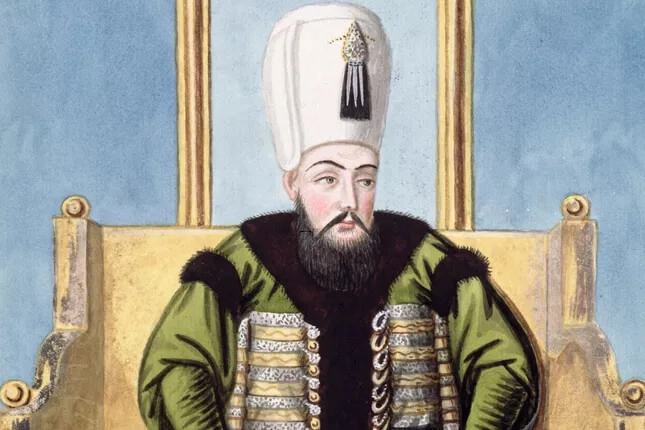
Ahmed I was born in 1590. He was the first sultan not to ascend to the Sanjak. He reorganized the inheritance system by introducing the Ekber and Erşed system. The most important events that took place during this period were the Celali Rebellion suppressed by Kuyucu Murat Pasha, the Zitvatoruk Treaty, which meant the end of the superiority in Europe, the Budin Victory against the Germans, the weakening of control in Tripoli, and the return of the lands gained with the Ferhad Pasha Treaty to Iran with the Nasuh Pasha Treaty. Ahmed I died in 1617.
Ahmed I carried out many reforms in the Ottoman Empire and left behind important works such as the Sultanahmet Mosque. He also made efforts to strengthen the central authority of the state.
On the one hand, the war with Austria, which lasted several sultans, ended in a peace treaty at Zsitvatorok in 1606, but this was a detrimental outcome for Ottoman pride, allowing European merchants to penetrate deep into the regime.
Read More : Extra History Of Ahmed I
15. Mustafa I (1617-1618, 1622-1623)
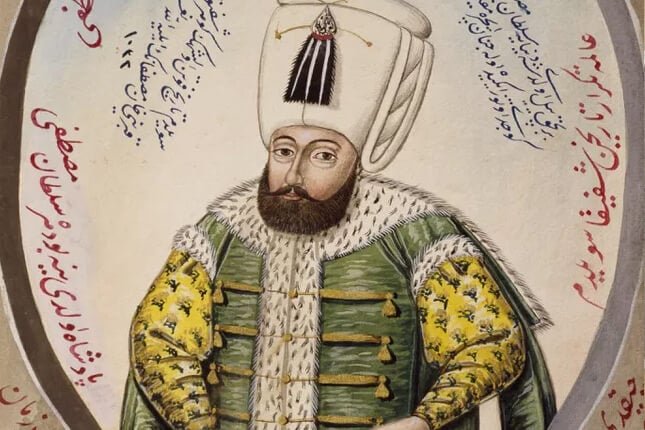
Mustafa I was born in 1592. He was the brother of Ahmed I. He was the first sultan to ascend to the throne according to the Ekber and Erşed system. Shortly after his accession to the throne in 1617, he was dethroned by the alliance of the ulema, military and state officials due to his erratic behavior. He was re-assigned to the throne in 1622, but was dethroned again a year and a half later for the same reason. The assassination of Osman II (Young Osman), who was enthroned between the two sultanates, in 1622 and the subsequent rebellions and the process of punishing the criminals are important events of the period.
The reign of Mustafa I was twice short-lived due to mental health problems. There were difficulties in state administration during his reign.
Considered a weak ruler, Mustafa I was deposed shortly after coming to power, only to return in 1622. Reinstated by the once elite Janissary troops, Mustafa was dominated by his mother and achieved little.
Read More : Extra History Of Sultan Mustafa I
16. Osman II (1618-1622)
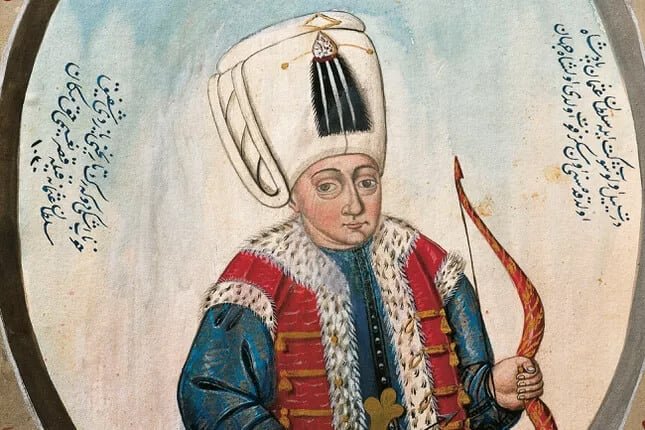
Osman II was born in 1604. During his reign, the Battle of Pul-i Shikeste with the Iranians was lost. The Treaty of Serav was signed and the borders returned to the status determined by the Treaty of Amasya during the reign of Suleiman the Magnificent. The Khotyn Campaign, which was launched and won due to the Poles’ interference in the internal affairs of Moldavia, the rebellion of the Janissaries and Sipahis, who were decided to be abolished due to their undisciplined behavior during this campaign, and the rebels’ raid on the palace resulted in the restoration of Mustafa I to the throne. He was assassinated in 1622.
Osman II, also known as Young Osman, wanted to make innovative reforms but was met with the reaction of the Janissaries. He was killed as a result of the Janissary rebellion.
Osman ascended to the throne at the age of 14 and decided to stop Polish intervention in the Balkan states. However, the defeat in this campaign led Osman to believe that the Janissary troops were now a hindrance, so he reduced their funds and began a plan to establish a new, non-Janissary army and power base. They discovered his plan and killed him.
17. Murad IV (1623-1640)

Murad IV was born in 1612. At the beginning of his reign, Baghdad and Revan fell into the hands of the Iranians as a result of treason. Therefore, he organized two expeditions to Iran. He took Baghdad back definitively. According to the Kasr-ı Şirin Treaty signed in 1639, which almost determined our current Iranian border, Baghdad and Mosul remained in the Ottoman Empire, while Revan and Azerbaijan remained in Iran. He requested reports from Koçi Bey and Katip Çelebi about the poor state of the state. Koçi Bey stated in his report problems such as bribery, incompetence, irregularities in the Janissary Corps and the unfair distribution of timars, and offered suggestions for solutions. Other important events of the period included the prohibition of alcohol and tobacco, the closure of coffeehouses, and the killing of Janissary and sipahi leaders.
Murad IV reestablished state authority by suppressing internal unrest and rebellions. During his reign, harsh measures were taken, such as tobacco and alcohol bans.
Coming to the throne at the age of 11, Murad’s early rule saw power in the hands of his mother, the Janissaries, and the grand viziers. Murad quickly crushed these rivals, seized all power, and recaptured Baghdad from Persia.
Read More : Extra History Of Sultan Murad IV
18. Sultan Ibrahim (1640-1648)
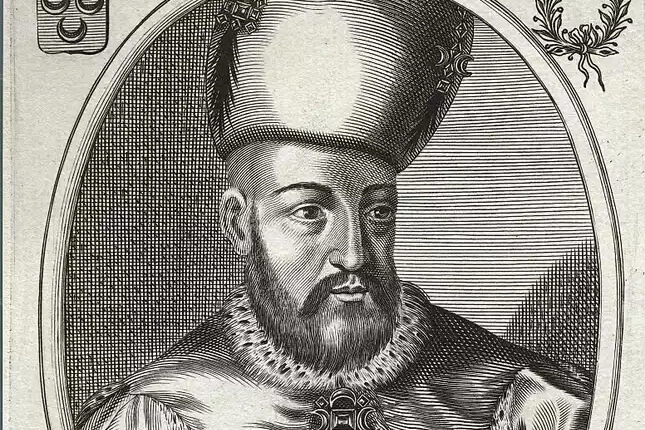
Sultan Ibrahim was born in 1615. He was the brother of Murat IV. The most important event of the period was the victory of the Cretan War against Venice and France, which started in 1645 and lasted for 4 years. He was dethroned in 1648 on the grounds that he was mentally unstable. He was executed the same year.
Sultan Ibrahim was ineffective in state administration due to his mental health problems and was dethroned. During his reign, the central authority of the state weakened.
In the early years of his reign, on the advice of a talented grand vizier, Ibrahim made peace with Persia and Austria; while other advisors were in control, he fought a war with Venice. He was exposed for his eccentricities and taxation, and the Janissaries killed him.
19. Mehmed IV (1648-1687)
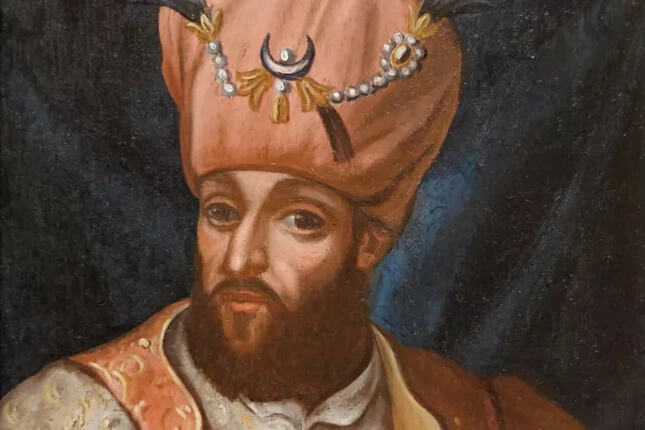
Mehmed IV was born in 1642. He was not yet 7 years old when he ascended to the throne. During this period, grand viziers such as Tarhuncu Ahmet Pasha, Köprülü Mehmet Pasha and Köprülü Fazıl Ahmet Pasha stood out with their success in reforms and conquests. During this period, the conquest of Crete was completed and this conquest was the last at sea. In 1664, Austria was defeated in front of Uyvar Castle and the Vasvar Treaty was signed. In 1672, Poland was defeated and the widest borders in the west were reached with the signing of the Bucaş Treaty. Vienna was besieged for the second time. But it was a heavy defeat. The Holy Alliance formed by Austria, Malta, Poland and Russia was fought. He was dethroned in 1687.
During the reign of Mehmet IV, the Köprülü family gained great power in the office of Grand Vizier and was influential in the state administration. During this period, the Ottoman Empire fought great wars in Europe and expanded.
When he came to the throne at the age of six, practical power was shared between the maternal grandees, the janissaries and the grand viziers, and he was happy with this and preferred hunting. The economic revival of the sultanate was left to others, and when he failed to prevent a grand vizier from starting a war with Vienna, he was unable to avoid failure and was dethroned.
20. Suleiman II (1687-1691)

Suleiman II was born in 1642. His father was Ibrahim I. The castles of Eger and Belgrade were lost to Austria, one of the Holy Alliance states. When Bosnia, Transylvania and Wallachia were occupied, an Austrian campaign was launched. Belgrade and many other places were recaptured and the Danube line was reestablished (1690). He died of illness in 1691.
Suleiman II struggled with internal unrest and wars with Austria throughout his reign, but the Ottoman military power weakened during his reign.
Suleiman had been imprisoned for 46 years before becoming sultan when the army expelled his brother, and now he was unable to stop the defeats his predecessors had initiated. However, when he handed control to Grand Vizier Fazıl Mustafa Pasha, Fazıl Mustafa Pasha turned the tables.
21. Ahmed II (1691-1695)

Ahmed II was born in 1643. His father was Ibrahim I. The Austrian advance of Grand Vizier Bozoklu Mustafa Pasha, who played an important role in the conquest of Belgrade, was stopped when he was defeated and killed in Petervaradin. The castle of Chios was lost to the Venetians. He died of illness in 1695.
Ahmed II tried to ensure peace both internally and externally during his reign, but the state’s economic problems increased during this period.
Ahmed lost the very talented grand vizier he inherited from Suleiman II in the war, and the Ottomans lost much territory because they were influenced by his court and attacked him, but he could not do much for them. Venice attacked, and Syria and Iraq became restive.
22. Mustafa II (1695-1703)
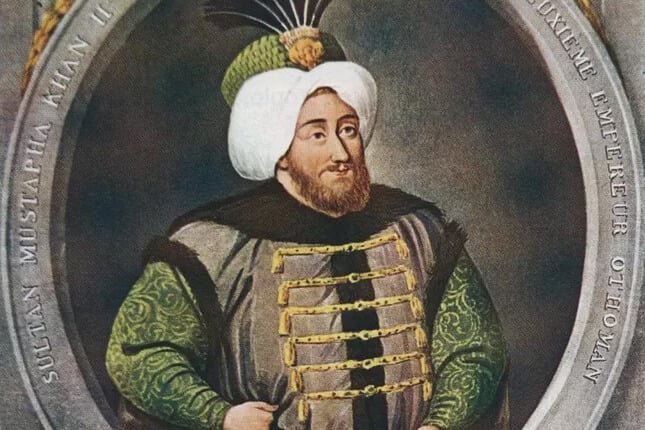
Mustafa II was born in 1642. His father was Mehmet IV. He organized three campaigns against Austria. He won the Battle of Logos in the first one, and the Battle of Ulaş in Temeşvar in the second one. He lost the Battle of Zenta in his last campaign (1697). During this time, the Venetians attacked Dalmatia and Mora, and Poland attacked Moldavia. The Ottomans were forced to seek peace. With the Treaty of Karlowitz signed in 1699, many lands were lost and thus a period of decline began. In 1700, with the Treaty of Istanbul signed with Russia, the Castle of Azak fell into Russian hands. He was dethroned in 1703 as a result of a military rebellion.
Mustafa II continued to fight wars with Austria and Venice, but suffered great territorial losses with the Treaty of Karlowitz. His reign is considered the beginning of the decline of the Ottoman Empire.
His initial determination to win the war against the Holy League of Europe led to early success, but when Russia moved in and took Azak the situation changed and Mustafa was forced to submit to Russia and Austria. This focus led to rebellions elsewhere in the empire and Mustafa was deposed when he turned away from worldly affairs and focused on hunting.
Read More : Extra History Of Sultan Mustafa II
23. Ahmed III (1703-1730)

Ahmed III was born in 1642. His father was Mehmet IV. During his reign, the Prut War with Russia was won and the Azak Castle was taken back. Mora was taken back from the Venetians. Austria, who wanted Mora to be returned to the Venetians, was declared a war and lost. With the signing of the Treaty of Passarowitz (1718), Serbia and Belgrade were given to Austria, and the coasts of Dalmatia, Bosnia and Albania were given to Venice. With this treaty, the Tulip Era, which lasted until the Patrona Halil Rebellion in 1730, began. As a result of the peace policy followed, there were not many wars, except for the Iranian War, which was lost, and the focus was on reforms.
The reign of Ahmed III is known as the Tulip Period, and saw great advances in art, culture and architecture. However, this period ended with the Patrona Halil Rebellion.
Because he was at war with Russia, King Peter XII of Sweden fought for concessions, but the fight against Austria did not go well either. Ahmed was able to agree to the division of Iran with Russia, but Iran threw out the Ottomans instead.
24. Mahmud I (1730-1754)
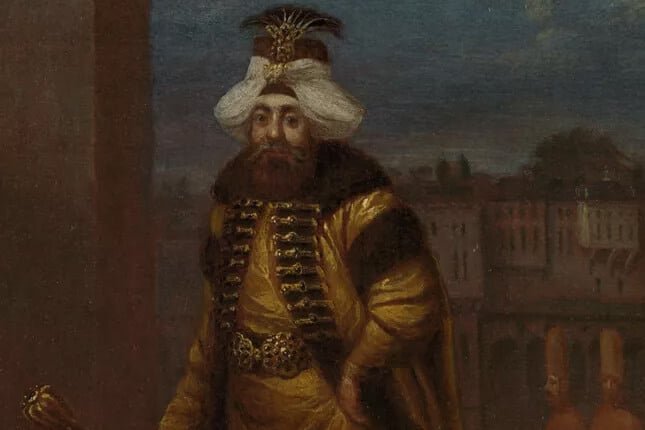
Mahmud I was born in 1696. His father was Mustafa II. He made many western-style innovations. The first artillery unit and military school, public libraries were opened. Capitulations were expanded. Wars were fought against Austria, Russia and Iran. Victory was won against Austria and Russia. With the Treaty of Belgrade in 1739, most of the lands lost with Passarowitz were regained. He died of illness in 1754.
Mahmud I struggled with the internal and external problems of the state and made some reforms in the military field. During his period, the Ottoman Empire achieved some successes in Europe.
Having secured his throne against rebels, including the Janissary rebellion, Mahmud was able to reverse the course of the war with Austria and Russia by signing the Treaty of Belgrade in 1739. He was unable to do the same with Iran.
Read More : Extra History Of Sultan Mahmud I
25. Osman III (1754-1757)
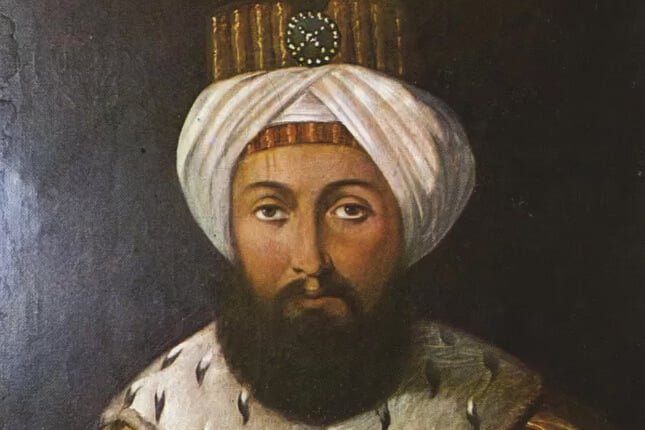
Osman III was born in 1699. His father was Mustafa II. There was no war during his reign. The lands he owned were tried to be protected. He died of illness in 1757. The reign of Osman III was short-lived and the internal problems of the state increased during his reign. However, there were some improvements in relations with Europe.
Osman’s youth in prison has been blamed for the oddities that marked his reign, such as trying to keep women away from him and the fact that he never established himself.
26. Mustafa III (1757-1774)
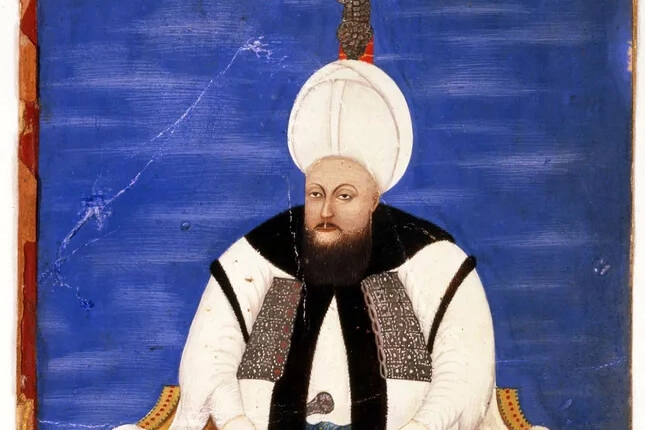
Mustafa III was born in 1717. His father was Ahmed III. He initiated reforms in the fields of finance and military. Tophane was reformed. The Imperial Naval Engineering School was opened. Despite not taking sides in the Seven Years’ War, war was declared against the Russians who shared Poland with Prussia (1768). A total of 3 victories were won in Southern Russia and Khotyn. Romania and Crimea were lost as a result of a subsequent war. The Russian fleet, which reached Mora with the support of the West, was defeated in Tripoli in 1770. They burned the Ottoman Navy in Çeşme with the help of the British. In 1771, Romania, Bulgaria and part of Crimea were taken back. Mustafa III died in 1774 before the end of the Russian War.
Mustafa III made reforms to increase the financial and military power of the state, but he was unsuccessful in the wars with Russia. His period was a difficult period for the Ottoman Empire.
Mustafa III knew that the Ottoman Empire was in decline, but his attempts at reform failed. He managed to reform the army and initially kept the Treaty of Belgrade and avoided European rivalry. However, the Russo-Ottoman rivalry could not be stopped and a war broke out.
27. Abdulhamid I (1774-1789)
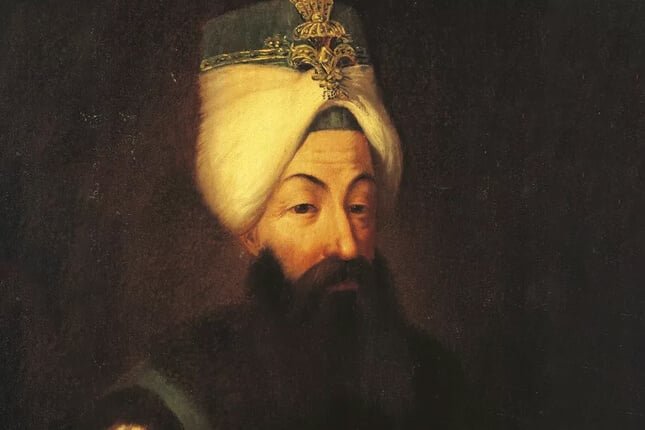
Abdulhamid I was born in 1717. His father was Ahmed III. In 1774, the Treaty of Küçük Kaynarca was signed with the Russians. Most of Crimea passed to the Russians. One of the most severe articles was that the protection of the Orthodox people in the Ottoman Empire was given to the Russians. The Aynalıkavak Treaty signed in 1779 further consolidated the situation. The Ottoman-Russian War of 1786-1792, which was started with the aim of regaining the lost territories in the Caucasus, also ended in defeat. He died in 1789.
Abdulhamid I tried to solve the financial problems of the state and made some reforms in the military field. However, during his period, the Ottoman-Russian wars continued and significant territorial losses occurred with the Treaty of Küçük Kaynarca.
Having inherited a war gone wrong from his elder brother Mustafa III, Abdulhamid was forced to sign an inadequate and shameful peace with Russia and was forced to go to war again in the later years of his reign. Nevertheless, he tried to reform and regain power.
Read More : Extra History Of Sultan Abdulhamid I
28. Selim III (1789-1807)

Selim III was born in 1761. His father was Mustafa III. During his reign, many reforms were made, also known as the Nizam-ı Cedid. Some of these reforms were the establishment of the Consultative Assembly, the opening of permanent embassies in some European countries, the establishment of the Nizam-ı Cedid army, and the opening of the Mühendishane-i Berri Hümayun for the technical staff of the new army. He was dethroned in 1807 with the Kabakçı Mustafa Rebellion, which was started by those who opposed the reforms.
Selim III tried to modernize the state by making comprehensive reforms called Nizam-ı Cedid. However, he was dethroned as a result of Janissary resistance and the Kabakçı Mustafa Rebellion.
Selim III, who inherited the bad wars, was forced to make peace with Austria and Russia on his own terms. However, inspired by his father Mustafa III and the rapid changes of the French Revolution, Selim initiated a comprehensive reform program. Selim tried to westernize the Ottoman Empire but gave up when faced with reactionary rebellions. He was overthrown during one such rebellion and killed by his successor.
29. Mustafa IV (1807-1808)

Mustafa IV was born in 1779. His father was Abdulhamid I. He bowed to the pressure of the rebels and abolished the Nizam-Cedid army, massacred the supporters of reform, and made great concessions to the Janissaries. He was dethroned by the Rusçuk Notable Alemdar Mustafa Pasha, who marched to Istanbul with the encouragement of the supporters of Selim III and Mustafa IV’s request for help against the internal unrest in Istanbul (1808).
Mustafa IV relied on the Janissaries and opposed reforms during his short reign. He was dethroned as a result of the rebellion of Alemdar Mustafa Pasha.
Mustafa, who had come to power as part of a conservative backlash against his reformist cousin Selim III, lost power almost immediately and was later killed on the orders of his own brother, Sultan Mahmud II.
Read More : Extra History Of Mustafa IV
30. Mahmud II (1808-1839)
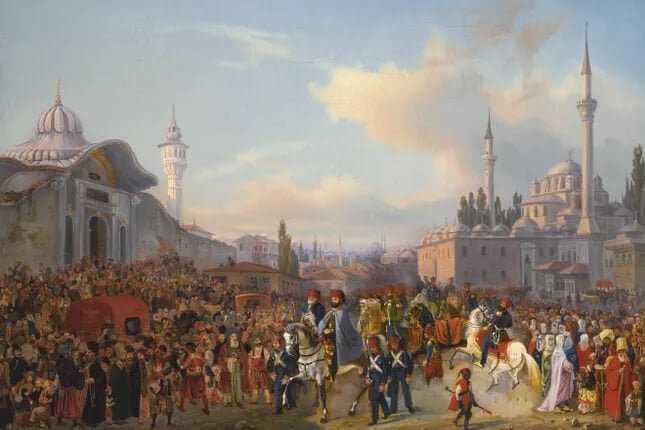
Mahmud II was born in 1785. His father was Abdulhamid I. He was the father of two of the last six sultans and the grandfather of four. He carried out the most radical reforms in the field of Westernization and science. He ascended to the throne with the help of Alemdar Mustafa Pasha. Important and destructive events such as the independence rebellions in the Balkans, the rebellion of the Egyptian Governor Kavalali Mehmet Ali Pasha and his coming to Kütahya, the occupation of Algeria by the French, and the Navarino Raid took place during this period. A Sened-i İttifak was signed with the nobles to stop the bad course of events. He established a European army called Sekban-ı Cedid. He abolished the Janissary Corps. The Russian War ended with the Treaty of Bucharest. The rebellion of the Serbs and the nobles was suppressed. Ministries were established in place of the Divan. Mekteb-i Tıbbiye and Mekteb-i Hayriye, which provided Western-style education, were established. He died in 1839.
Mahmud II restructured the state by abolishing the Janissary Corps (Vaka-i Hayriye) and establishing a modern army. During his reign, important administrative, military and social reforms were carried out.
When a reformist force tried to restore Selim III, they found him dead, thus dethroning Mustafa IV, and under Mahmud II Ottoman power in the Balkans was collapsing in the face of Russia and nationalism. Elsewhere in the empire, things were little better, and Mahmud tried some reforms himself: eliminating the Janissaries, bringing in German experts to rebuild the army, appointing new government officials. Despite the military losses, he achieved much.
Read More : Extra History Of Sultan Mahmud II
31. Abdulmecid (1839-1861)

Abdulmecid was born in 1823. The Tanzimat Edict was declared in 1839. The Crimean War of 1853-1855 began. The British and French, who helped the Ottomans in this war, demanded new reforms. The Reform Edict was declared in 1856. Then the Jeddah Rebellion, Wallachia, Moldavia, and Montenegro independence movements began. During this period, the first telegraph line was laid between Istanbul-Varna-Crimea. Abdulmecid passed away in 1861.
Abdulmecid initiated legal and administrative reforms by declaring the Tanzimat Edict. The Tanzimat period was a period in which the Ottoman modernization efforts intensified.
In keeping with the ideas sweeping Europe at the time , Abdülmecit expanded on his father’s reforms to transform the nature of the Ottoman state. The Noble Edict of the Rose Chamber and the Imperial Edict ushered in the Tanzimat/Reconstruction era. He worked to keep the Great Powers of Europe mostly on his side to better hold the empire together, helping him win the Crimean War. Despite this, some territory was lost.
Read More : Extra History Of Sultan Abdulmecid Efendi
32. Abdulaziz (1861-1876)
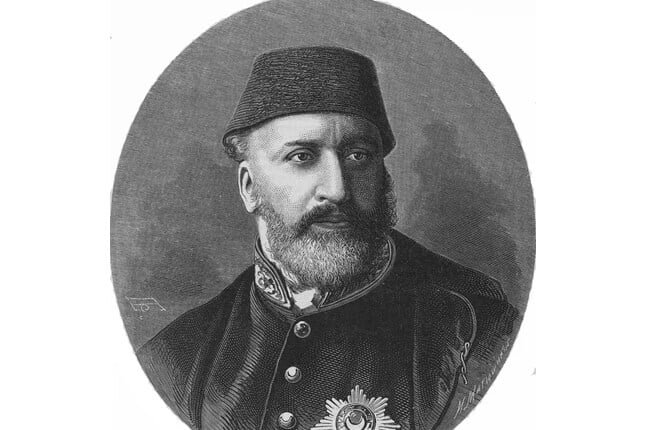
Abdulaziz was born in 1830. His first job was to try to improve the finances. The Serbian rebellion was suppressed. He traveled to Egypt and gave the title of Khedive to the Egyptian Governors. Belgrade was lost in the Serbian rebellion that broke out again. When the Cretan rebellion could not be completely suppressed, Crete was shared with the Greeks. He visited capitals such as Paris, London and Brussels. The Council of State, known today as the Council of State, and the Court of Cassation, known as the Court of Judicature, were established. The Suez Canal was opened in 1869. He was dethroned in 1876.
Abdulaziz strengthened the navy and made many reforms. However, he was dethroned due to economic problems and internal turmoil, and it was claimed that he later committed suicide.
Although he continued his brother’s reforms and admired the nations of Western Europe, he experienced a shift in politics with the deaths of his advisors and the German defeat of France in 1871. He now promoted a more Islamic ideal, befriended Russia and fell, spending vast sums as debt mounted and he was deposed.
Read More : Extra History Of Sultan AbdulAziz
33. Murad V (30 May 1876 – 31 August 1876)
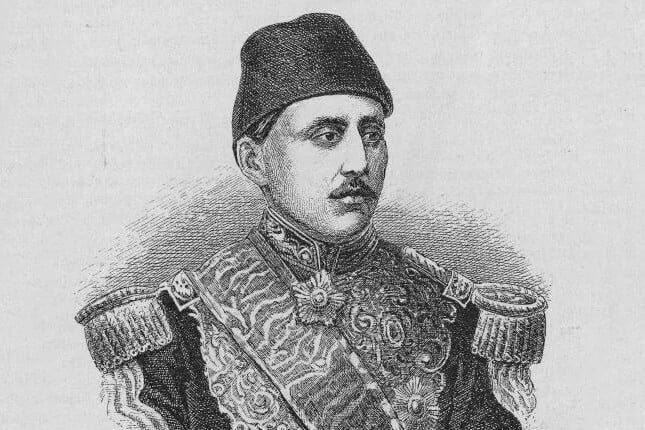
Murad V was born in 1840. He became friends with many European statesmen during his travels in Europe with his uncle Abdulaziz. He was dethroned after only 3 months on the grounds that he was mentally ill. He lived in the palace for another 28 years and died in 1904.
Murad V suffered from psychological problems during his short reign and was dethroned. No serious reform movement was initiated during his reign.
Murad, a Western liberal, was placed on the throne by rebels who had overthrown his uncle. However, he suffered a mental breakdown and was forced to retire. There were several unsuccessful attempts to bring him back.
Read More : Extra History of Sultan Murad V
34. Abdulhamid II (1876-1909)
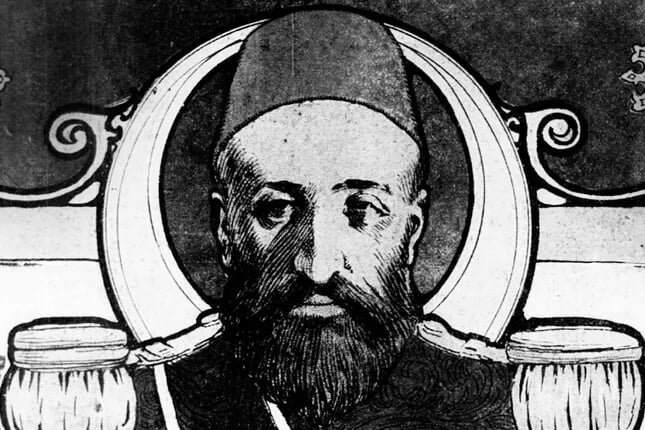
Abdulhamid II was born in 1842. He followed a balance policy towards the West and East. He started the First Constitutional Era by declaring the first constitution, the Kanun-i Esasi. He ended the First Constitutional Era by suspending the parliament, which became inoperable during the 1877-1878 Ottoman-Russian War. In the war called the 93 War, Kars and Ardahan in the east, Plevne and Sapka in the west fell into Russian hands. The British occupied Cyprus using the Russians as an excuse. France occupied Tunisia, the British occupied Egypt, and Greece occupied Crete. As a result of the chaos that followed the declaration of the Second Constitutional Era (1908), Bosnia, Bulgaria and Eastern Rumelia were lost. The sultan, who was held responsible for the rebellion called the March 31 Incident, which was started by opponents of the Constitutional Era in Istanbul, was dethroned by a group led by the Committee of Union and Progress (1909). Many educational institutions, hospitals, foundations, museums and banks were opened during his reign. Highways were built to the interior of Anatolia, railways to Baghdad and Medina, and horse-drawn tram lines were built to the big cities. He died in 1918.
Abdulhamid II adopted an oppressive style of government known as the autocracy period throughout his long reign. However, many reforms were also implemented during his reign, and great advances were made, especially in the fields of education and transportation. With the declaration of the Second Constitutional Era in 1908, his administrative powers were limited, and he was dethroned in 1909.
Abdulhamid, who tried to prevent foreign intervention with the first Ottoman constitution in 1876, decided that the West was not the answer as they wanted their lands and instead scrapped the parliament and constitution and ruled as a strict autocrat for 40 years. However, the Europeans, including Germany, managed to get their hooks in. The Young Turk uprising of 1908 and a counter-rebellion saw Abdulhamid dethroned.
Read More : Extra History Of Sultan Abdulhamid II
35. Mehmet Reşad V (1909-1918)
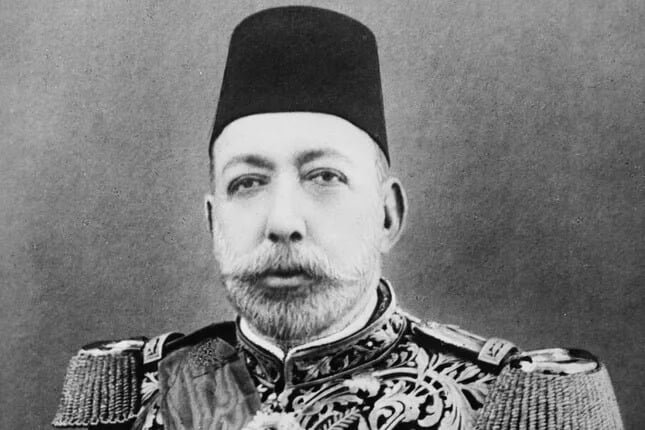
Mehmet Reşad was born in 1844. During his time, the Italians captured Tripoli and Benghazi, landed troops on 12 islands, and the First Balkan War broke out. As a result of the heavy defeats, the Bulgarians advanced to Çatalca, Greece captured Thessaloniki, and Albania gained its independence. Taking advantage of the Second Balkan War between the Balkan states, Edirne and Kırklareli were taken back. The Meriç River became the border with Bulgaria. World War I broke out in 1914, and the war was fought on the side of the Germans. Despite victories on almost every front, such as Çanakkale, the Ottomans were also considered defeated when the Germans were considered defeated. Mehmed Reşad passed away in 1918.
The reign of Mehmet Reşad V coincides with the last years of the Ottoman Empire. During this period, the Balkan Wars, World War I and the collapse of the empire took place. The Ottomans suffered significant territorial losses during this period.
Removed from a quiet, literary life by the Young Turk rebellion to act as sultan, he was a constitutional monarch in which practical power belonged to the Committee of Union and Progress. He reigned through the Balkan Wars, during which the Ottomans lost most of their remaining European territories and resisted entry into World War I. This went disastrously, and Mehmed died before Constantinople was occupied.
Read More : Extra History Of Sultan Mehmet Resat V
36. Mehmet Vahdettin (1918-1922)

The year he ascended to the throne, the Armistice of Mudros was signed. According to this armistice, which included very harsh conditions, when Istanbul, like many other parts of the country, was occupied, Mustafa Kemal Pasha and his friends, who thought that the state could no longer be governed and that the people should take care of themselves, went to Anatolia and started the War of Independence. A new parliament was established in Ankara and with the abolition of the sultanate by this parliament, the era of the Sultans and the Ottoman State ended on November 1, 1922.
Mehmet VI Vahdettin was the last sultan of the Ottoman Empire. During his reign, the empire effectively ended with the defeat of World War I and the signing of the Treaty of Sevres. The sultanate was abolished in 1922 and Vahdettin went abroad.
Mehmed came to power at a critical time, as Mehmed I first made a deal with the allies to ward off nationalism and preserve his dynasty, then negotiated with the nationalists to hold elections, which they won. The fighting continued as Mehmed dissolved the parliament, the nationalists established their government in Ankara, Mehmed signed the Treaty of Sevres of World War I, which essentially left the Ottoman Empire as Turkey, and the nationalists soon abolished the sultanate. Mehmed was forced to flee.
Read More : Extra History Of Sultan Mehmet IV Vahdettin
Complete List of All Ottoman Emire Sultans
The List of Ottoman Sultans includes the sultans who governed an empire that lasted approximately 600 years and each left an important mark in their own time. Examining the List of Ottoman Sultans is of great importance in understanding not only the history of the Ottoman Empire but also the impacts it had on world history. This list highlights the names and periods of the leaders who took part in the administration of the Ottoman Empire during its rise, stagnation, decline and collapse. The List of Ottoman Sultans provides a detailed account of the administrative staff of an empire that was full of various reforms, conquests and administrative changes throughout history. Examining the Complete List of Ottoman Sultans in detail is of great importance in terms of increasing historical awareness and understanding the legacy of this great empire. The List of Ottoman Sultans is a guide that sheds light not only on Ottoman history but also on world history.
Ottoman Sultans and Their Wives
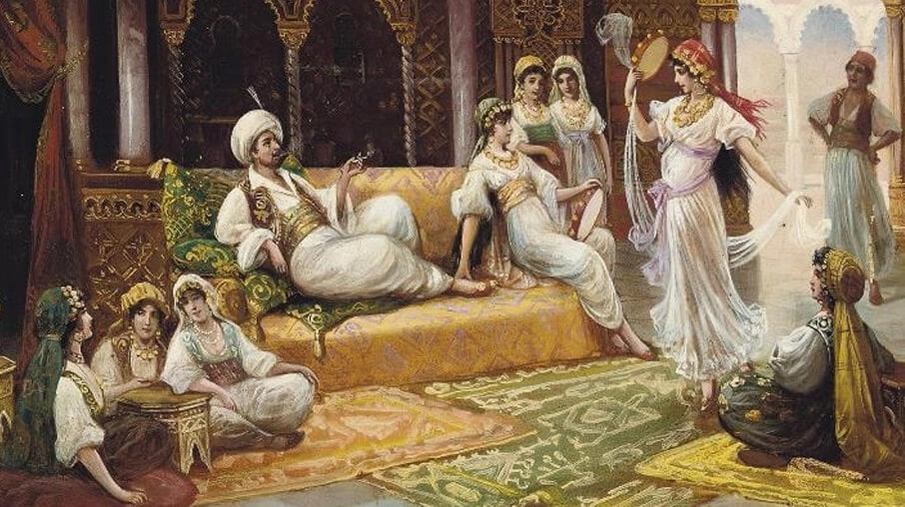
How much do we know about the Ottoman sultans who ruled over three continents ? There is a deep history and pride in our past that can be told by libraries. With the ranking of the Ottoman sultans, you can get to know the sultans much more closely. Today, we have compiled information about the Ottoman sultans and their wives for you.
In the late 13th century, a series of small principalities emerged in Anatolia, sandwiched between the Byzantine and Mongol Empires. These territories were dominated by ghazis—warriors dedicated to the cause of Islam—and were ruled by princes or “beys.” One of these was Osman I , the leader of the Turkmen nomads who gave his name to the Ottoman principality, which grew rapidly in the first few centuries and became a major world power. The Ottoman Empire ruled over large areas of Eastern Europe, the Middle East, and the Mediterranean until 1924, when the remaining territories were incorporated into Turkey.
A Sultan was originally a person with religious authority; later the term was used for regional rule. Ottoman rulers used the term padishah for nearly all of their dynasties. In 1517, the Ottoman Sultan Selim I took the Caliph position in Cairo and adopted the term; Caliph is a title generally used to mean leader of the Muslim world. Ottoman use of the term ended in 1924, when the empire was replaced by the Republic of Turkey. Descendants of the royal dynasty continue to follow their line to the present day.
Osman Gazi’s Wives:
Malhun Hatun, Rabia Bala Hatun
Orhan Gazi’s Wives:
Nilüfer Hatun, Asporça Hatun, Theodora Hatun, Theodora Maria Hatun, Eftandise Hatun
Wives of Murad I:
Gülçiçek Hâtûn, Paşa Melîke Hâtûn, Maria Tamara Hâtûn, Fûl-Dâne Hâtûn
Wives of Yıldırım Bayezid:
Maria Hatun, Hafsa Hatun, Karamanoğlu Hanım, Sultan Hatun, Mileva Olivera, Despina Hatun, Devlet Hatun
Mehmed I’s Wives:
Shah-Zade Kumru Hanım, Şehzade Hatun, Emine Hatun
Wives of Murat II:
Alime Hatun, Yeni Hatun, Huma Hatun, Hatice Halime Tac’un-Nisa Hatun, Mara (Mary) Hanim, Hundi Hanim
Fatih Sultan Mehmed’s Wives:
Sitti Mu’kerime (Mukrime) Hatun, Hatice Hatun, Cicek Hatun, Helene Hatun, Anna Hatun, Alexias Hatun
Wives of Bayezid II:
Nigar Hatun, Sirin Hatun, Bulbul Hatun, I. Ayşe Hatun, Gul-Ruh Hatun, Husnu-Shah Hatun, Gul-Fem Hatun, II. Gul-Bahar Hatun, Ferah-Shad Hatun, Muhterem Hatun
Yavuz Sultan Selim’s Wives:
Ayşe Hatun II, Ayşe Hafsa (Hâfize) Valide Sultan
Wives of Suleiman the Magnificent: Fulane Hatun, Gulfem Hatun, Mahidevran Sultan, Hurrem Haseki Sultan
Wives of Selim II:
Afife Nur-Banû Valide Sultan, Selimiye Sultan
Wives of Murat III:
Safiye Valide Sultan, Şah-i Huban Hatun, Şems-i Ruhsar Hatun, Naz-Perver Hatun, Mihriban Hatun, Fahriye Hatun
Wives of Mehmed III:
Fuldane Sultan, Handan I. Valide Sultan, Halime II. Valide Sultan
Wives of Ahmet I:
Mah-Firuze Hatice I. Valide Sultan, Fatma Sultan, Mah-Peyker Kösem II. Valide Sultan
Wives of Mustafa I: –
Wives of Osman II:
Ayşe Sultan, Meylişah Sultan, Akile (Rukiyye) Hanım
Murad IV’s Wives:
Ayşe Haseki Sultan
Ibrahim-I’s Wives:
Turhan Hatice Valide Sultan, Saliha Dil-Âşûb Valide Sultan, Hatice Mu’azzez Haseki Sultan, Ayşe Haseki Sultan, Saçbağlı Haseki Sultan, Mah-i Enver Haseki Sultan, Şivekar Haseki Sultan, Hüma Şah Sultan
Mehmed IV’s Wives:
Mah-Pâre Emetullah Rabi’a Gul-Nush Valide Sultan, Afife Gözde, Rabia Gözde, Kaniye Gözde, Siyavuş Gözde
Wives of Suleyman II:
Hatice Hatun, Behzad Hatun, Ivaz Hatun, Sülün Hatun, Shah-Suvar Hatun, Zeyneb Hatun
Wives of Ahmet II:
Rabi’a Haseki Sultan, Sayeste Hanım
Mustafa II’s Wives:
Ali-Cenap Haseki Sultan, Saliha Sebkati Valide Sultan, Hafize Haseki Sultan, Shah-Suvar (Shahsuvar) Valide Sultan, Afife Hatun, Huma Shah Hatun, Mah-Firuz Hatice Hatun, Hanife Iqbal, Hanife Iqbal
Wives of Ahmet III:
Ummetullah Banu Bas, Ruqiyye, Emine Mihr-i-Shah, Hatice, Sahin, Rabi’a Sharmi, Emine Musalli, Zeyneb, Gulshan, Fatima, Ummu Kulsum, Husn-u-Shah, Hurrem, Meyli, Nazife, Nijad, Hanife, Ayşe Bukhari, Şayeste, Hatem
Mahmud I’s Wives:
Hace Ali-Cenap Kadinefendi, Ayşe Kadinefendi, Hace Ayşe Kadinefendi, Hatice Kadinefendi, Raziye Kadinefendi, Hatem Kadinefendi, Tiryal Kadinefendi, Hace Verd-i Naz Kadinefendi, Hatice Rami Kadinefendi, Meyyase Kadinefendi, Fehmi Kadinefendi, Sirri Kadinefendi, Habbibe Kadinefendi
Wives of Osman III:
Leyla Kadinefendi, Zevki Kadinefendi, Ferhunde Emine Kadinefendi
Wives of Mustafa III:
Ayn’ul-Hayat Kadinefendi, Fehime Kadinefendi, Mihr-i-Shah Valide Sultan, Rif’at Kadinefendi, Ayşe Adil-Shah Kadinefendi, Binnaz Kadinefendi
Wives of Abdulhamid I:
Ayşe Kadınefendi, Hüma Şah Kadınefendi, Haciye Hatice Ruh-Şah Kadınefendi, Binnaz Kadınefendi, Mu’teber Kadınefendi, Misl-i Neyap Kadınefendi, Nevrâz Kadınefendi, Mihrib Kadınefendi, Fatima Şeb-Zafer Kadınefendi, Mehtâb Kadınefendi, Ayşe Seniyeperver (Sinâ-Pervar) Valide Sultan, Dil-Pezir Kadınefendi, Nakş-i-Dil Valide Sultan, Nükhet-Sedâ Hanımefendi, Ayşe Hanımefendi and Ruşen Hanınefendi.
Wives of Selim III: Nafize, Husn-i Mah, Zib-i Fer, Afîtab, Re’fet, Nur-i Shams, Dim-Hoş, Gonca-Nigar, Meh-Bube, Tab-ı Zafer, Mihriban, Nefise, Pakize, Fatma, Fer-i Cihan, Ayn-ı Safa, Meryem.
Wives Of Mustafa IV:
Şevk-i Nur Kadınefendi, Dil-Pezir Kadınefendi, Seyyare Kadınefendi, Peyk-i Dil Kadınefendi.
Mahmud II’s wives: Bezm-i-Âlem Valide Sultan, Aşûb-u Cihan Kadınefendi, Vuslat Kadınefendi, Nûr-u Tab Kadınefendi, Haciye Hoş-Yar Kadınefendi, Parviz-Felek Kadınefendi, Hüsn-ü Melike Kadın, Zeyn-i Felek Kadın, Lebriz-Felek Kadın, Tiryal Kadın, Pertevniyal (Pertav-Nihâl) Valide Sultan.
Abdulmecid I’s Wives:
Servet-Sedâ Kadınefendi, Hoş-Yar Kadınefendi, Şevk-Efzâ Valide Sultan, Tîr-î-Müjgan Kadınefendi, Verd-i Cânan Kadınefendi, Ruz-i Dil Kadınefendi, Gül-Kemâl Kadınefendi, Şâh Cihân Kadınefendi, Gülüstü (Gülistan Münire) Kadınefendi, Râhime Piristû Valide Sultan, Zerrin-i Melîke Kadınefendi, Düzd-i Dil Kadınefendi, Nesrin Hanımefendi, Nesrin Hanımefendi, Ceylan-Yar Hanımefendi, Nükhet-Sezâ Kadınefendi, Nâvek-i Misâl Kadınefendi, Meh-Tâb Kadınefendi, Nergiz Hanımefendi, Nev-Eser Hanımefendi, Nâlân-ı Dil Kadınefendi, Şayeste Hanımefendi, Ayşe Ser-Firaz Hanımefendi, Bezm-i Cihan Kadin, Husn-u Cihan Lady, Safderun Lady, Yıldız Lady, Şems-i Nur Lady
Abdulaziz’s Wives:
Dürr-i Nev Kadınefendi, Edâ Dil Kadınefendi, Hayran-ı Dil Kadınefendi, Neş’erek (Nesrin) Kadınefendi, Gevheri Kadınefendi, Mehr-i Şah Kadınefendi, Yıldız Kadınefendi
Mehmed V. Murad’s Wives:
Elârân Mevhibe Kadınefendi, Reftâr-ı Dil Kadınefendi, Şâh Cihan Kadınefendi, Meyl-i Servet Kadınefendi, Resan Kadınefendi, Cevher-Riz Kadın, Nev-Dürr Kadın, Ramişe-Naz Kadın, Filiz-Ten Kadın, Visal-i Nur Kadın, Tarân-ı Dil Kadın
Wives of Abdulhamid II:
Nazikeda Chief Woman, Safi-Naz Nur-Efzun Woman, Bedrifelek Woman, Bidar Woman, Dil-Pesend Woman, Mezide Mestan Woman, Emsal-i Nur Woman, Musfika Woman, Sazkar Woman, Peyveste Woman, Fatma Pesend Woman, Behice (Maan) Woman, Saliha Naciye Woman, Durdane Woman, Calibos Woman, Nazli Yar Woman
Mehmed V (Reşad) Wives:
Kamuran Kadınefendi, Dürr-i And Kadınefendi, Mihr-Engiz Kadınefendi, Naz-Perver Kadınefendi, Dil-Firib Kadınefendi
Mehmed VI (Vâhideddîn) Wives:
Emine Nazik-Edâ Baş Kadınefendi, İnşirah Kadınefendi, Şadiye Müveddet Kadınefendi, Nevvare Kadınefendi, Nimet Nevzad Hanımefendi
